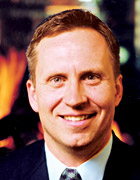Rising Healthcare Costs
 As an independent healthcare insurance agent working with small and medium sized employers, there are three questions I am often asked.
As an independent healthcare insurance agent working with small and medium sized employers, there are three questions I am often asked.
Question #1 If the national average for healthcare premium increases is 12.7%, why have our healthcare premiums increased 23%?
There are many surveys done each year speculating what types of healthcare premium increases we can expect. If you are a small employer (2-50 employees), these projected increases are national averages and do not necessarily pertain to you. Many of the employers surveyed tend to be major employers (5,000 +) who have more control over negotiating rates and getting and keeping healthy employees.
State and federal mandates, which tend to apply more to small employers, have been responsible for higher increases. Researchers from Conning Research & Consulting found that such mandates increase cost by 15-25%.
Question #2 What if we banded together with other small employers in our industry so we could have more bargaining power?
This makes sense on the surface, but there is a history of failure for several reasons. In fact, there are private letter rulings due to many court cases. The biggest problem is lack of common ownership of the “banded together” employees. Often these arrangements are started through an association where the employers are banded together informally. What happens if the association disbands? According to the private letter rulings, the insurance companies are left holding the bag. Because of this, most insurance companies are not interested in participating in these arrangements.
Even when these arrangements did occur, most participating employers liked the new plan in the first years. But, as plan premiums increased, some employers became dissatisfied. They found healthy (risk) employees leaving the plan and the not-so-healthy ones remaining, as premiums continued to skyrocket. If you are a small employer, chances are great your current insurance company is already leveraging your business with other small businesses. Rather than “re-inventing the wheel”, possibly it’d make more sense to focus on the next question.
Question #3 What are my options? Managed care (HMO, PPO, POS, etc.,) will not provide the premium decreases it did in the 1990’s. According to a recent Hewitt Associates’ survey of 140 employers with more than 1 million employees (see what I mean about surveys including major employers?) HMO premiums increased by 15.3% this year. This is comparable to other less stringent medical plans.
The big trend I see is consumer driven healthcare benefits. Consumer driven healthcare gives employees a vested interest in the choices they make through higher deductibles. The consumer becomes more educated (through his wallet) on varying costs of medical and hospital services, prescriptions, and tests.
The newest form of consumer driven healthcare is the HRA (Health Reimbursement Arrangements) which allows employers to choose a high employee deductible ($1,500+) and then provide, say, $500 for the employee to offset the deductible. None of the $500 employer contribution is taxable income to the average employee. If the employee doesn’t use any or all of the $500, the remainder carries forward to the next year.
This concept is very similar to a MSA (Medical Savings Account). The main difference is MSAs are available only to small employers (2-50), whereas HRAs are available to all employers. Another way employers are limiting their cost for healthcare insurance is through cost sharing. When employees pays a portion of the premium, they tend to be better “team players” on tough decisions about plan design.
The healthcare arena is scary, at best. By “controlling the controllables,” you’re doing the best you can.
Daniel J. Stalp , is a partner with the employee benefits consulting firm Dessonville Boler Wood Murray & Stalp Inc. located in Overland Park, Kan. He can be reached by phone at 913.451.7700 or by e-mail at Stalp@aol.com or dstalp@dessonville-kc.com.